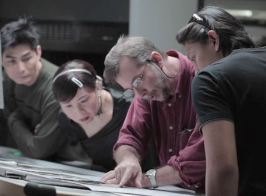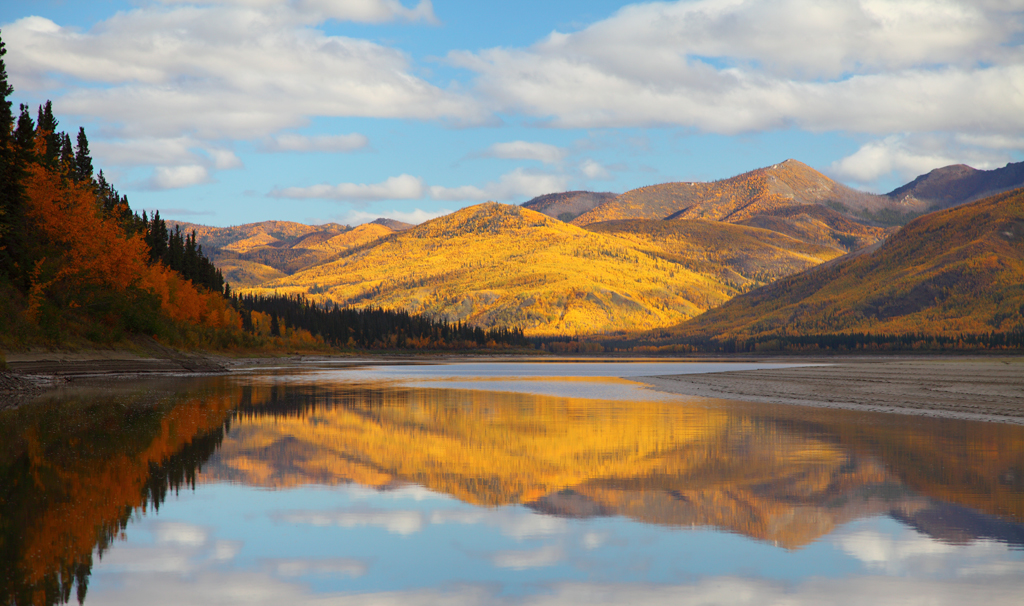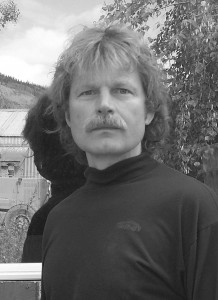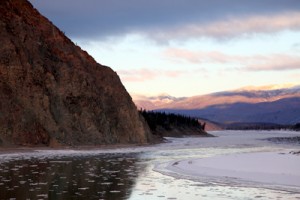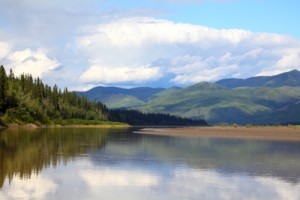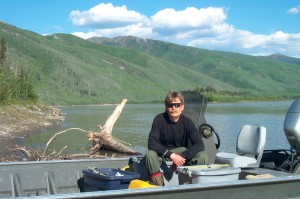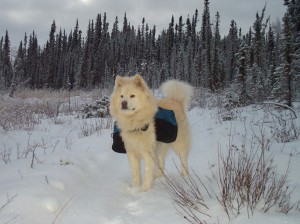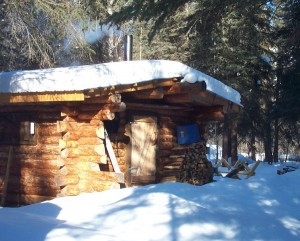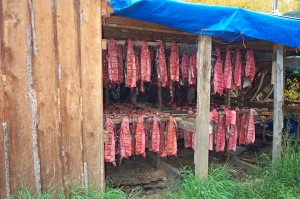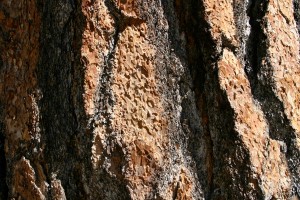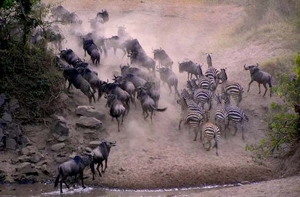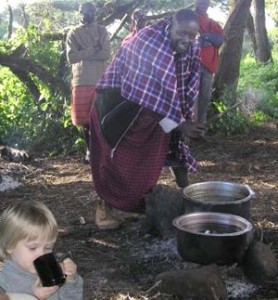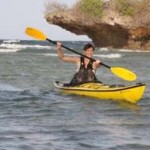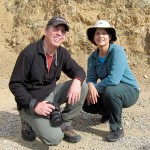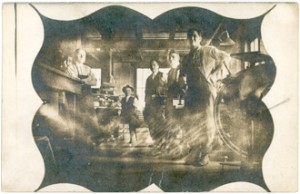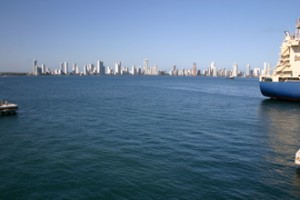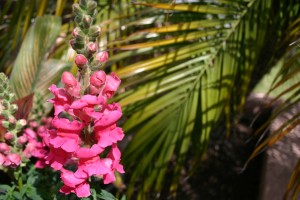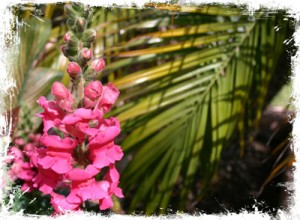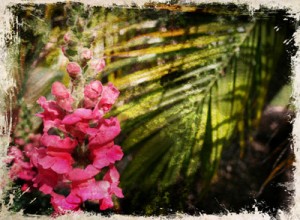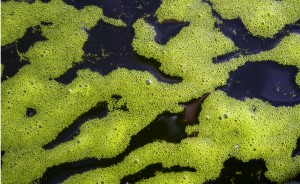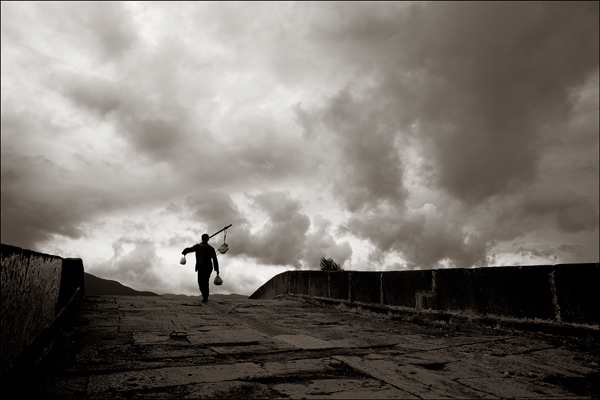 Photos and Text © by David Hartung
Photos and Text © by David Hartung
www.davidhartung.com
Six-month backpacking trip becomes life-long journey
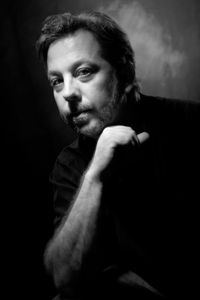
David Hartung
For nearly 20 years I’ve been living and working in Asia. During this time my constant companion and magic ticket to enter into the lives of so many people has been my camera.
I was first introduced to Asia in 1985 when I set out to do what was planned to be a six-month backpacking trip. Those six months then got stretched out to what became four years. The trip took me to Japan, Hong Kong, China, Taiwan and South Korea. It was in South Korea where I decided to live for the next three and a half years.
The 80s were a turbulent time for South Korea in which the country was experiencing dramatic changes in their social and political system. At that time the country was governed by a military dictatorship, which, like most dictatorships, didn’t much appreciate dissent. However in the late ’80s activists and students took to the streets and held massive protests on an almost daily basis demanding an end to military rule and for the political system to be opened up to everyone.
Fearing the protests could disrupt the 1988 Summer Olympics or even cause the Olympics to be moved to a new host city, the military lead government gave in and opened up the 1987 presidential election to everyone.
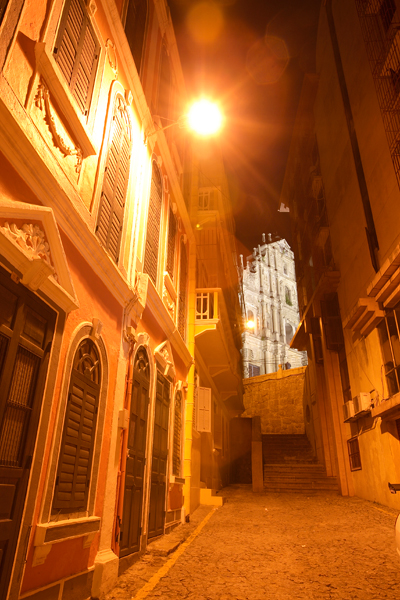
‘Ruins of St. Paul’s,’ a popular symbol of “old” Macau
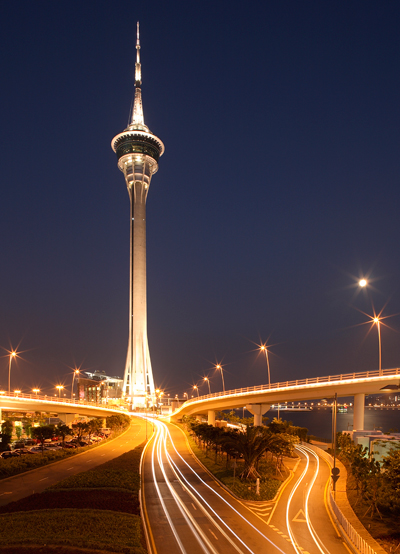
Modern day Macau
It was an extremely interesting and exciting time in South Korea. I could see the country changing right before my eyes and I did all I could to document visually these events. My days were spent photographing riots, election activities, candidates and later the Olympic games.
While in Korea, I met and married, and, and at the end of 1988 my wife and I returned to Southern California where I got a job with the Ventura County Star Free Press, and then later moved over to the Thousand Oaks News Chronicle. Working on daily paper was a great experience and taught me how to work and think quickly while on deadline.
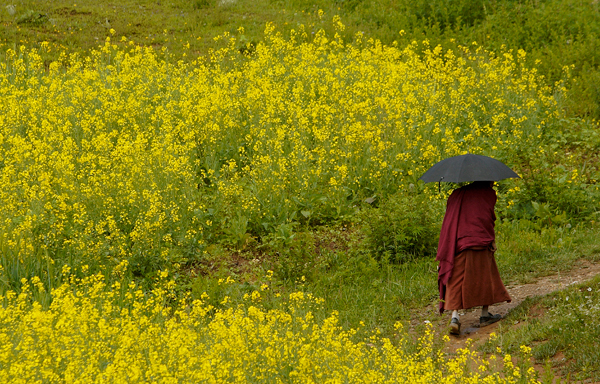
A Tibetan Buddhist monk walks through one of the fields surrounding the Songzanlin Monastery near the city of Shangrila, China. The three hundred year old monastery was built by the fifth Dalia Lama and houses several hundred monks.
However, after about five years I felt a strong desire to return to Asia. An opportunity presented itself when my wife, now working as a flight attendant for United Airlines, was offered a position at a new base they were opening in Taiwan. With little hesitation we packed our bags and set out to begin a new life in a new country.
Taiwan, as it turned out, was not a popular place for foreign journalists or photographers to be based. This fact actually ended up working in my favor. Prior to going to Taiwan I made a trip to New York City to meet with photo editors to show them my portfolio.
With no introduction I would cold call these photo editors who worked for the biggest names in the business. The initial response to my introduction garnered no interest until I mentioned that I was based in Taipei, Taiwan. As soon as I mentioned this fact I was asked how long I was in town and when I could stop by the office for a chat.
It seems that finding competent photographers they could trust to carry out their assignments were difficult to find in Taiwan. Typically they would have to fly someone in from Hong Kong or elsewhere to do this work. With budgets shrinking they were relying on locally based photographers to do the work whenever possible.
That said, it was still difficult to get assignments from these editors. Being an unknown photographer made it risky for them to trust me with a big assignment. However after doing a few jobs for some international magazines my name was starting to get seen.
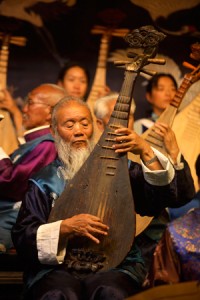
Performance of ancient Naxi ethnic music at a theater in LiJiang, China. Many of the orchestra’s members are over 80 years old. They perform daily for visitors keeping this ancient form of music alive.
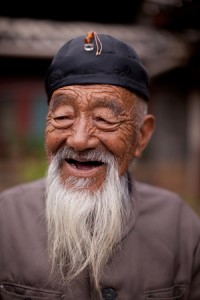
Portrait of a village elder in the courtyard of his home in a village called Bai Sha located near the city of Lijiang in China’s Yunnan Province.
My big break came when Newsweek asked me to shoot a cover and exclusive interview with the newly elected President of Taiwan named Lee Teng-hui. This was the first, of what was has now become many, extremely stressful shoots in which I had only a few minutes to make a photo. His handlers told me that I would have three minutes to do the cover shoot. I, of course, responded with confidence that it would be no problem. While my outward appearance was that of a calm, confident photographer my inner self was battling a huge case of anxiety.
The plan was to first shoot the interview and then at the end shoot the portrait. I was nervous to say the least, and then to add to my stress level, my camera died as soon as President Lee walked into the room. Fortunately I had a second body with me and the rest of the shoot went smoothly. The portrait ended up on the cover with a huge headline saying, “Mr. Democracy”. This issue received a lot of attention around the region, which in turn, helped me to get more jobs.
We ended up living in Taiwan for nearly 10 years, and during that time I photographed a variety of topics. Tension between Taiwan and China meant there was constant flow of stories covering this topic. Taiwan was also a big industrial base for many high-tech companies so I was doing quite a lot of business and industrial photography as well. Additionally, I kept busy shooting feature and travel stories all over Asia for a variety of publications around the world.
In 2005 I decided to relocate my base to Shanghai, China. Much of the work that had been keeping me busy in Taiwan was eroding away with all the attention going to China. So, like any other migrant worker, I followed the work. Fortunately many of the clients that I established in Taiwan continued to hire me for their mainland assignments. I kept busy doing much of the same sort of work I had been doing in Taiwan. Shanghai is a major business center in China so much of my work was for international business magazines such as Forbes and Businessweek.
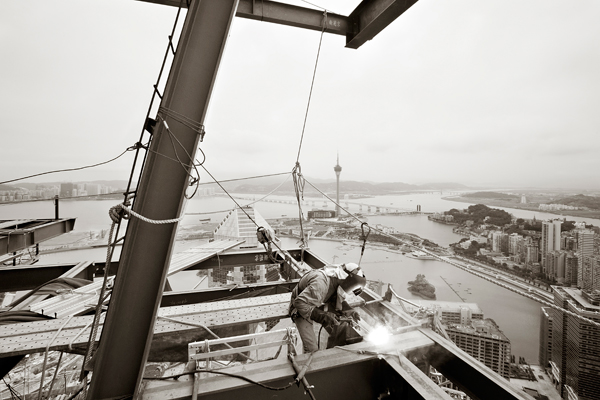
The city of Macau, gaming capital of Asia, sprawls below a steel worker raising a new skyscraper.
While in Shanghai I was contacted by a friend who was starting his own magazine and he asked me to help him get it going. The idea for the magazine was to cover an area of the Guangdong Province called the Pearl River Delta which is located on the southeastern side of China.
We did five issues of the magazine which was called Destination PRD. During this time we came to Macau, which is also in the Pearl River Delta, and quickly realized that the small city was growing and changing at a phenomenal rate.
We then decided to create a publication focused solely on Macau and called this publication Destination Macau. The new publication achieved some early success and proved to be a more viable publication than Destination PRD. We poured all our attention into Destination Macau until it drew the interest of a venture capital company that decided to buy into the publication. With this injection of cash I was asked to move to Macau and work fulltime for the publication.
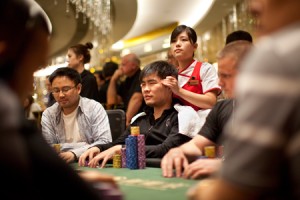
Poker Stars’ APPT Tournament held at the Grand Lisboa, one of the many casinos in Macau.
Working for one publication was a lot of fun. In many ways it was a dream job. We covered a whole array of topics which included entertainment, dining, fashion, culture, cultural events and business. We had nice clean design where the photos were used big and I had a lot of freedom to do what I liked.
During this period of time Macau was growing quickly with the arrival of new mass-market gaming resorts. Several Las Vegas casinos, such as the MGM, Las Vegas Sands Corp., and Wynn, as well as other foreign and local operators, received licenses to open casinos in Macau, so they were all busy building their properties. All of these new resorts are large and impressive. Macau was becoming the adult playground for the Chinese.
There was so much happening and I was shooting so many images documenting this activity that I soon began thinking that a book could be created from this material. With that idea in my head I began to organize my work and even do some sample layouts. And then when I thought I had enough material I laid out an entire book and sent it off to Blurb, a publishing company that will print a single book. With this, I was able to begin showing the book around to gauge interest.
Fortunately the company that owns Destination Macau liked the project and agreed to print the book. The book, called Macau-Work in Progress, was released on Dec. 6, 2011 and is currently available in bookshops around Macau and Hong Kong, as well as on Amazon in the US.
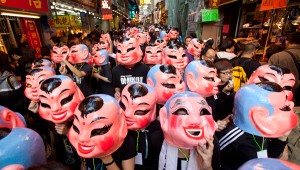
The Macau government welcomes the art community by hosting the Fringe Festival. Here participants parade from the St. Paul’s Ruins to Senado Square.
I’m still based in Macau and have no immediate plans to relocate any time soon. My work with Destination Macau is not as involved as before, as I’m now pursuing other projects and freelance work. One of those projects is documenting life along what is known as the Ancient Tea Horse Trail located in China’s Yunnan Province. This trail was once an important trading route between Tibet and Southwestern China and on to neighboring countries such as Laos and Burma.
In addition to my photography work I’ve also been teaching photojournalism classes on a part-time basis to students at the United International College located in Zhuhai, China.
Life in Asia continues to be interesting to me, so as long as I can hold a camera I hope to keep working in this part of the world.
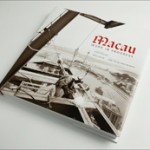
Macau, Work in Progress
David Hartung recently published his first book of photographs, Macau: Work in Progress, with story by Anita Duffin, and commentary by José Luís De Sales Marques. Macau: Work in Progress is available through PearlRiverGallery.com.
While David captured Macau’s transformation with his lens and very talented eye, Anita documented the city’s rise in travel, gaming, lifestyle publications, and newspapers, reporting locally and internationally as a freelance journalist for more than seven years.
